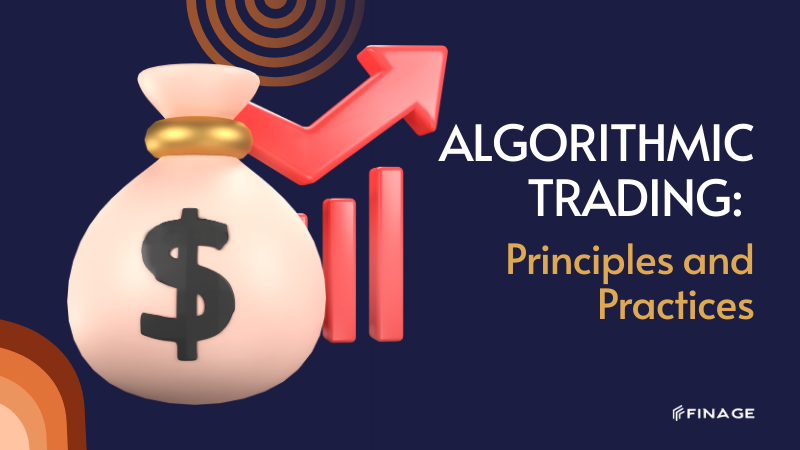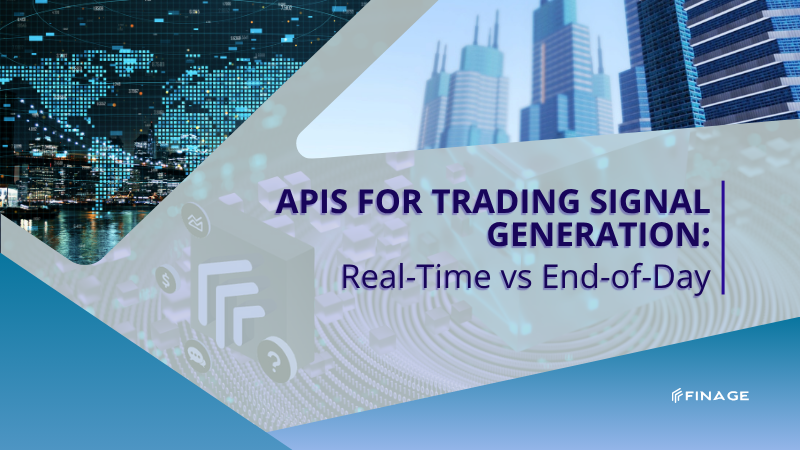Algorithmic Trading: Principles and Practices
5 min read • December 24, 2023

Introduction
Introduction
Algorithmic trading, commonly known as algo trading, constitutes the utilization of computer programs programmed with predefined instructions to execute trades swiftly and frequently, aiming to secure profits at speeds unattainable by human traders. Its pervasive use has introduced profound implications for financial markets, influencing diverse aspects ranging from market liquidity to the prevalence of specific trading strategies. The objective of this blog post is to unravel the fundamentals and methodologies underlying algorithmic trading, providing a comprehensive understanding of its mechanisms and shedding light on its transformative effects within the contemporary trading environment.
At its core, algorithmic trading relies on advanced mathematical models and predefined criteria to make instantaneous trading decisions based on market data. By automating the trading process, these algorithms execute trades at high speeds, reacting swiftly to market conditions, price fluctuations, or other predefined triggers. The utilization of algorithmic strategies spans various market segments, including stocks, currencies, commodities, and derivatives, enabling traders to capitalize on fleeting opportunities and execute large volumes of trades efficiently.
The impact of algorithmic trading on financial markets is multifaceted. One significant consequence lies in the enhancement of market liquidity as these algorithms contribute to a continuous flow of trading activities, narrowing bid-ask spreads, and facilitating smoother market operations. However, algorithmic trading also raises concerns regarding market stability, as the speed and frequency of trades can amplify market volatility or trigger abrupt price fluctuations. Moreover, the prevalence of these strategies prompts ongoing discussions about fairness, market transparency, and the potential for market manipulation, necessitating continual oversight and regulatory scrutiny. Understanding the mechanisms and impact of algorithmic trading is pivotal for comprehending the evolving dynamics of financial markets, emphasizing the need for a balanced approach to harness its advantages while mitigating potential risks.
Table of Contents
- The Basics of Algorithmic Trading
- Definition and Overview
- Evolution of Algo-Trading
- Key Principles of Algorithmic Trading
- Speed and Automation
- High-Frequency Trading (HFT)
- Statistical Arbitrage
- Building Algorithmic Trading Systems
- Strategy Development
- Backtesting and Optimization
- Risk Management
- Technological Infrastructure
- Software and Hardware Requirements
- Data Feeds and Latency
- Impact on Financial Markets
- Market Efficiency
- Regulatory Concerns
- Ethical Considerations
- Fairness and Transparency
- The Debate over HFT
- Future Trends in Algorithmic Trading
- Machine Learning and AI Integration
- Regulatory Evolution
- Conclusion
The Basics of Algorithmic Trading
Definition and Overview
Algorithmic trading involves using computer algorithms to execute trade orders. These algorithms make decisions based on predefined criteria such as timing, price, quantity, or any mathematical model.
Evolution of Algo-Trading
Algo trading has evolved significantly with advancements in technology, particularly in the areas of computing power, data analysis, and network connectivity.
Key Principles of Algorithmic Trading
Speed and Automation
Speed is a critical element in algo-trading, with trades executed in fractions of a second. Automation allows for executing complex strategies that would be impossible manually.
High-Frequency Trading (HFT)
HFT is a form of algo-trading characterized by high speeds, high turnover rates, and high order-to-trade ratios. It leverages high-frequency financial data and electronic trading tools.
Statistical Arbitrage
This involves using quantitative models to identify trading opportunities based on statistical arbitrage strategies, exploiting price inefficiencies between assets.
Building Algorithmic Trading Systems
Strategy Development
Developing an effective trading strategy is the foundation of successful algo-trading. Strategies are often based on historical data analysis and predictive modeling.
Backtesting and Optimization
Backtesting involves testing the trading strategy using historical data to ensure its effectiveness. Optimization fine-tunes the strategy for better performance.
Risk Management
Effective risk management protocols are essential to protect against market volatility and unexpected events.
Technological Infrastructure
Software and Hardware Requirements
Algorithmic trading requires robust software for developing and running algorithms, and powerful hardware to process trades at high speeds.
Data Feeds and Latency
Real-time data feeds are crucial for algo-trading, and low latency ensures that the system can react instantly to market changes.
Impact on Financial Markets
Market Efficiency
Algo trading can enhance market efficiency by providing liquidity and enabling price discovery, though it may also contribute to market volatility.
Regulatory Concerns
As algo-trading becomes more prevalent, regulators are increasingly focused on ensuring fair markets and preventing market manipulation.
Ethical Considerations
Fairness and Transparency
There are ongoing debates about the fairness of algo trading, particularly concerning market access and the transparency of trading algorithms.
The Debate over HFT
HFT, in particular, has been a point of contention, with arguments over its impact on market stability and small investors.
Future Trends in Algorithmic Trading
Machine Learning and AI Integration
The integration of machine learning and AI is set to further sophisticate algo trading, enabling more adaptive and intelligent trading strategies.
Regulatory Evolution
As the technology evolves, so too will the regulatory landscape, which will need to adapt to new challenges and innovations in algo-trading.
Conclusion
Algorithmic trading stands as a pivotal force that has reshaped the very fabric of financial markets, presenting a spectrum of possibilities and complexities. Grasping the fundamentals and intricacies of algorithmic trading becomes imperative for individuals seeking to traverse the terrain of contemporary financial markets successfully. This transformative approach to trading, driven by algorithms executing transactions at lightning speed, demands a nuanced understanding to harness its potential effectively. Moreover, with the relentless march of technology, the domain of algorithmic trading is poised for continual evolution and regulatory adaptations.
The advent of algorithmic trading has redefined the landscape of financial markets, leveraging computational power to execute trades with precision and efficiency. Understanding its principles is key, as algorithmic trading operates on intricate strategies based on mathematical models, data analysis, and rapid decision-making. Mastery of these concepts becomes essential for traders and market participants aiming to navigate modern financial ecosystems adeptly. Furthermore, as technology evolves, the horizon of algo trading will witness further innovation, likely introducing sophisticated algorithms and strategies that adapt to market dynamics. Alongside these advancements, regulatory frameworks will evolve to address challenges related to market stability, fairness, and risk management. Staying attuned to these changes will be crucial for participants in the ever-evolving realm of algorithmic trading, enabling them to capitalize on opportunities while navigating the evolving regulatory landscape effectively.
You can get your Real-Time and Historical Market Data with a free API key.
Build with us today!
Claim Your Free API Key Today
Access stock, forex and crypto market data with a free API key—no credit card required.

Stay Informed, Stay Ahead
Finage Blog: Data-Driven Insights & Ideas
Discover company news, announcements, updates, guides and more


